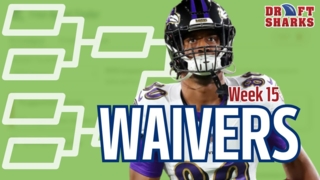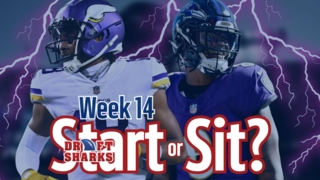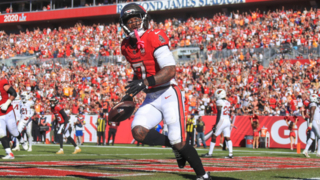Week 9 Regression Candidates

Why Regression Matters in Fantasy
In fantasy football, overperforming players (playing better than expected) will likely slow down. And underperforming players may improve to match their expected performance.
We want to spot temporary spikes or dips to help predict the returns toward "normal."
To spot regression candidates, I like to use expected points models. Expected = average/normal.
Expected Points models (x-P) quantify the expected value of plays based on:
- down
- distance
- field position
- and game situation
They calculate how many points a player will likely score on each play and compare it to historical outcomes in similar situations.
For example, a pass on third-and-10 from the opponent’s 20-yard line has a different x-P value than a first-and-goal run from the 5-yard line.
An x-P model assigns these values to determine how efficient players are in turning opportunities into points.
There are several good x-P models out there. For this series, I’ll use Pro Football Focus' expected-points model.
I'll highlight some outlier players at RB, WR, and TE, and then break down some potential actions to take on these players.
How to Use Expected Points
- Identify Efficiency: Use x-P to evaluate which players outperform their opportunities (scoring above their x-P) or underperform (scoring below). Players consistently outperforming x-P may have elite efficiency, while those underperforming could signal a potential bounce-back or inefficiency.
- Spot Opportunity: x-P helps highlight players getting high-value opportunities (e.g. red-zone touches, end-zone targets) even if their actual fantasy points lag behind. This can signal potential breakout candidates or buy-low trade targets.
- DFS Options: A player’s values are often tied to production and projection. The market can misprice a player’s true potential, especially in small slates.
The quickest way to analyze data is to throw it into a graph.
The graphs below show the expected points per game (Y-axis) vs. the actual points per game (X-axis), with a red line in the middle showing a perfectly balanced player.
This data represents Weeks 5-8.
Expected Points Review: RB
Players above the red line have underperformed vs. expectations.
The players below the line have overperformed vs. expectations.

(Note: Numbers do not include Thursday night's game for Alvin Kamara and Javonte Williams.)
Expected Points Review: WR
Players above the red line have underperformed vs. expectations.
The players below the line have overperformed vs. expectations.

Expected Points Review: TE
Players above the red line have underperformed vs. expectations.
The players below the line have overperformed vs. expectations.

Expected Points: Workload Changes
Players above the orange line have lost (expected) work since the start of the season.
Players below the line have gained workload or opportunities in recent weeks compared to the rest of the season.
Weeks 1 through 4 are considered the start of the season. The Last 2 weeks are considered "now."

Draft using the best dynamic tool in the industry. Our fantasy player valuations (3D Values) change during your draft in response to...
- Exact league settings - direct sync
- Opponent and Team Needs
- Positional scarcity & available players
- Ceiling, injury risk, ADP, and more!
You need a dynamic cheat sheet that easily live-syncs with your draft board and adapts throughout your draft using 17 crucial indicators.
Get your Draft War Room Today
 Redraft
Redraft Dynasty
Dynasty Best Ball
Best Ball




















